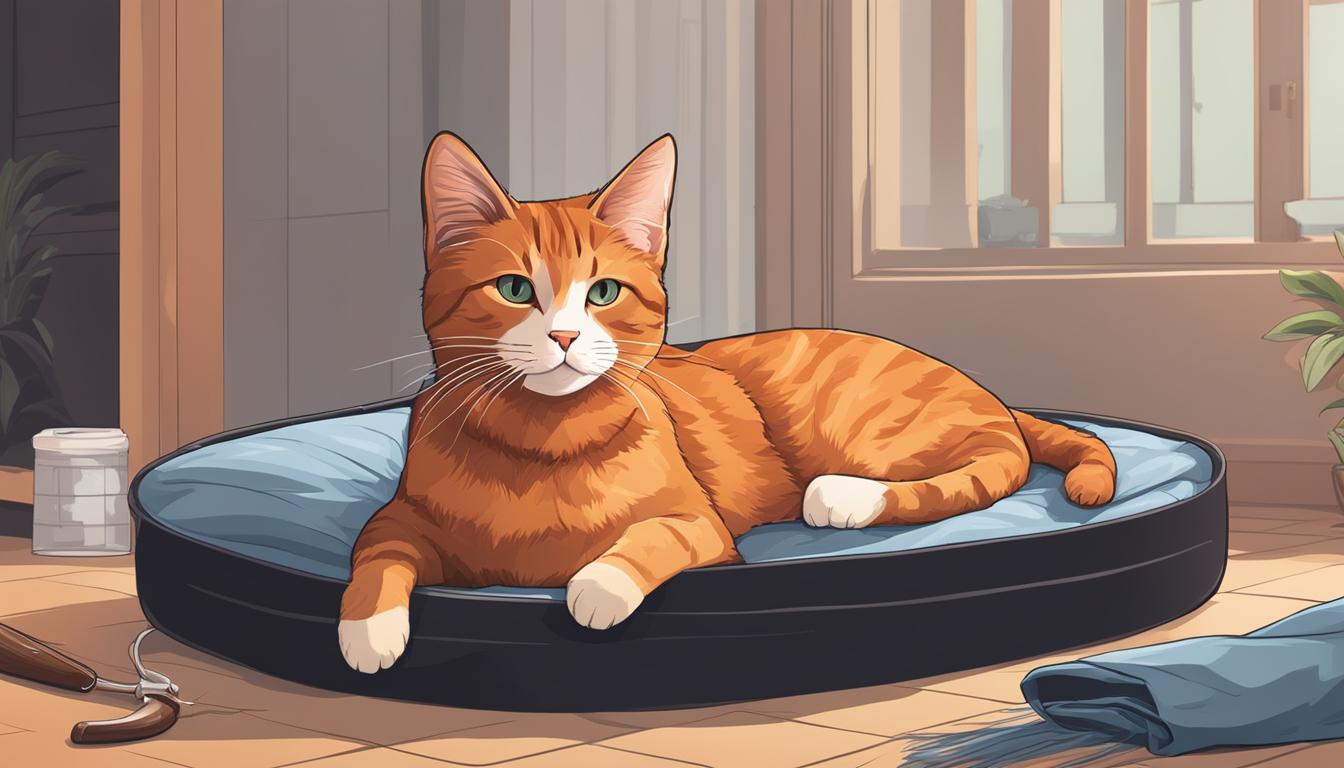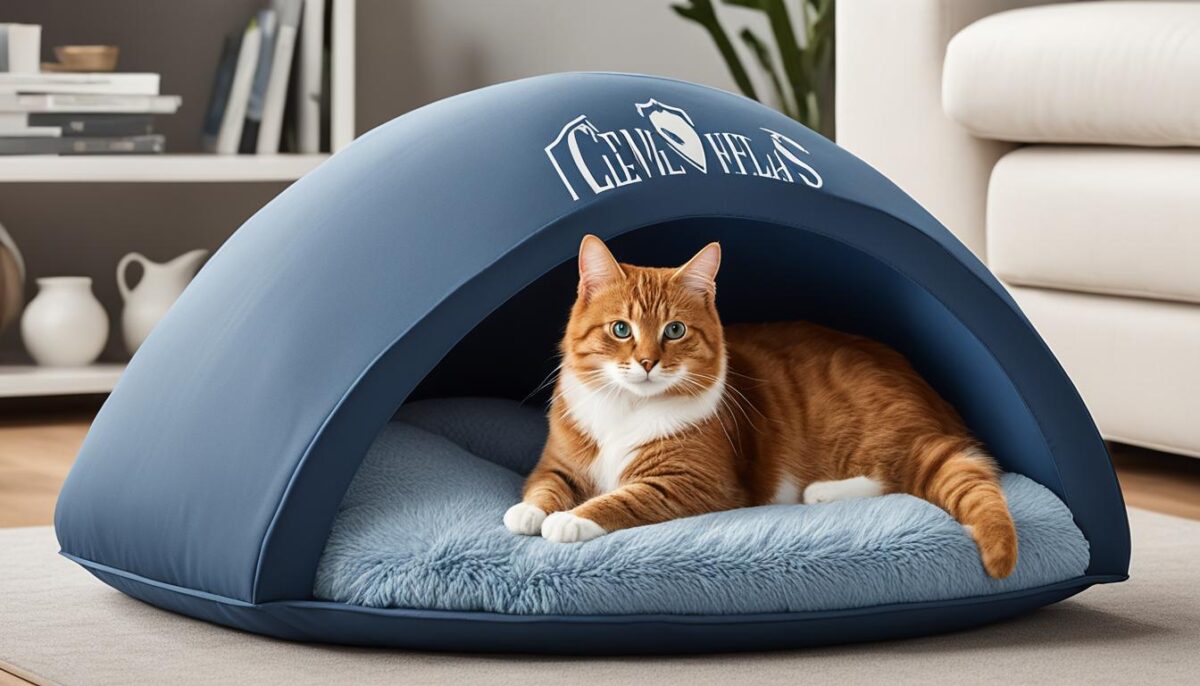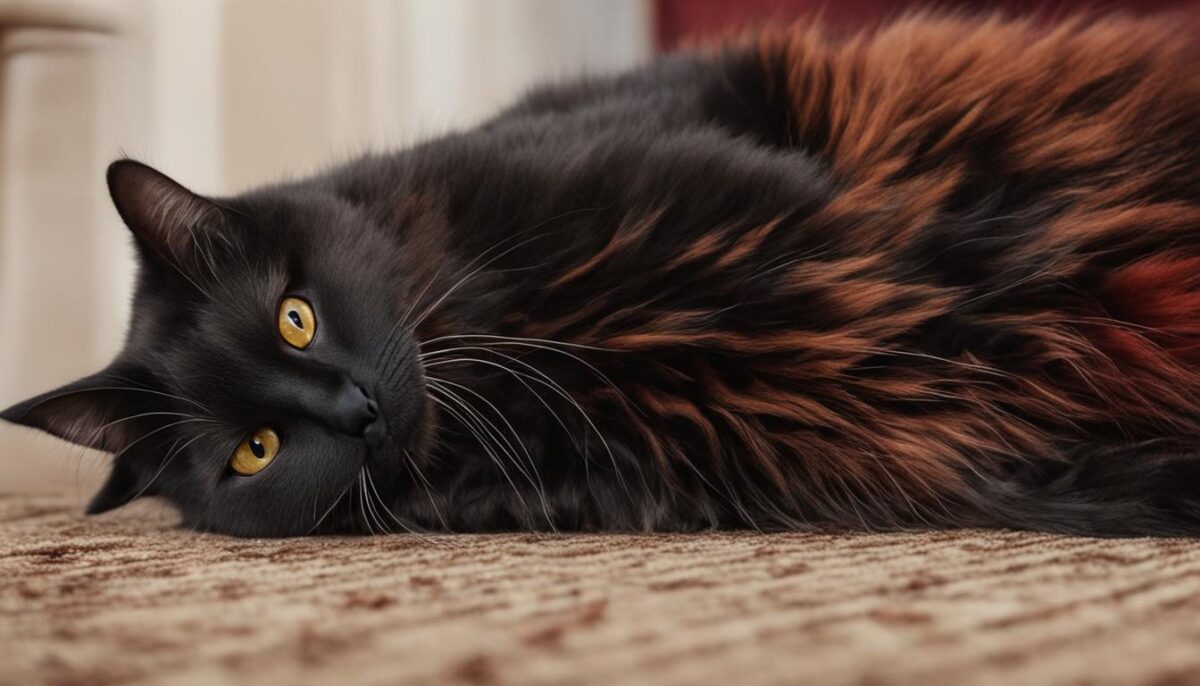If you have a cat that stays inside, you might think it’s safe from little bugs like fleas. But that’s not always true. Fleas are tiny insects that can hop onto pets and even people. Once they come inside, they can lay lots of tiny eggs all around your house. These fleas might come from other animals, places your pet visits like the vet’s office, or they might hitch a ride on someone’s clothes.
Keeping your indoor cat free from fleas is a big part of keeping them healthy. You want to make sure your furry friend is as happy and comfy as possible, right? So, let’s talk about how you can help protect your indoor cat from the risk of fleas and make sure they stay snug and bug-free.
Key Takeaways
- Fleas can affect indoor cats, too – they’re not just an outside pet problem.
- Little bugs like fleas can jump onto your cat or come into your home on clothes.
- To keep your cat healthy, it’s very important to protect it from fleas.
- Cleaning your home and using the right flea prevention can help a lot.
- Your vet can help you choose safe and effective flea treatments for your cat.
Understanding Flea Risks for Indoor Cats
Have you ever heard that only outdoor cats get fleas? This isn’t true at all! Indoor kitties can get these pesky bugs too! Let’s bust some myths and learn the facts about fleas on indoor cats.
Common Myths and Facts About Indoor Cats and Fleas
Some folks think indoor cats can’t get fleas, but this is a big indoor cat flea myth. Even if your cat stays inside, fleas can sneak in on clothes or new furniture and find a cozy home in your cat’s fur. Don’t be fooled — flea eggs and flea larvae indoor cats are real problems!
Why Even Indoor Cats Are Vulnerable to Fleas
It might seem strange, but indoor pets face flea risks just like outdoor pets. Fleas are tiny, sneaky critters that can enter your home in many ways without an invite. If a friend with a pet visits, or you bring in a second-hand rug, fleas may tag along too.
The Lifecycle of Fleas and Its Impact on Indoor Felines
Understanding the flea lifecycle can help keep your whiskered friends safe. Fleas start as eggs, then turn into wriggly larvae, rest in pupae, and finally grow up to be adult fleas. It’s important to spot and stop them at every stage, especially before they lay more flea eggs around your home.
By knowing the truth about indoor cats and fleas, you can help keep your fluffy pal happy and itch-free. Just remember, fleas are sneaky, but you’re smarter and can protect your pet!
Can Indoor Cats Get Fleas?
If you think your furry friend is safe from itchy critters because they live indoors, think again. Cats who stay inside can still get fleas. These tiny bugs are sneaky and can get into your home in ways that might surprise you. Let’s take a closer look at how these pesky pests find their way to your indoor cat.
The Surprising Ways Fleas Infiltrate Homes
Fleas are like little ninjas of the bug world; they can sneak into your house without you even noticing. They might hitch a ride on your clothes or slip in when you open the door. Once they’re in, they start looking for a warm place to stay, and that could be your cat! Keeping your house clean is a great way to safeguard your home from fleas.
Interactions With Other Pets and Their Role in Flea Transmission
When your dog or a visiting pet pal has fleas, those fleas can jump over to your cat. It’s like when you share toys, but instead of fun, it’s itchy bugs being shared. Not good! It really shows how flea transmission is not just an outdoor problem.
Human Carriers: Bringing Outdoor Risks Inside
Yes, you read that right. People can accidentally bring fleas into the house, too! Fleas can cling to your shoes, socks, or pants when you’re outside and then they come in when you do. If you’ve been somewhere with animals, it’s a good idea to change your clothes to avoid giving fleas a free ride. This way, you won’t risk causing a flea infection in indoor cats.
| Culprit | How They Help Fleas Enter | What You Can Do |
|---|---|---|
| Other Pets | Pets coming inside may have fleas on them | Use flea preventive treatments |
| Your Clothes & Shoes | Fleas latch onto fabrics and come inside | Change clothes and clean footwear after coming from outdoors |
| Visitors | People visiting may unknowingly bring fleas | Clean areas after having guests |
Remember, keeping an eye out for these little invaders is a big part of keeping your cat happy and your home free of fleas. By knowing how they sneak in, you can stop them and keep your indoor kitty safe and sound.
Identifying a Flea Problem in Indoor Cats
Do you know how to identify fleas on your indoor cats? The first sign you might notice is flea dirt—tiny black specks that show your furry friend could have unwelcome guests. Another thing to watch for is your cat scratching more than usual or losing fur. These might be flea problem signs. Fleas can also cause flea allergic reactions, making your cat really itchy and uncomfortable. Let’s take a closer look at checking your cat for fleas.
| Signs of Fleas | What to Look For | What to Do |
|---|---|---|
| Flea Dirt | Small black specks on your cat’s skin or bed | Check your cat’s fur closely, especially near the tail and neck |
| Excessive Scratching | Your cat scratching more than normal | Look for redness or bumps on the skin |
| Hair Loss | Noticeable thinning or bald patches in fur | Spot-check for fleas in areas with less fur |
| Allergic Reactions | Increased irritation, red skin, bumps | Visit the vet for advice on flea allergies and treatment |
Remember, keeping an eye out for these signs is the first step to identify fleas indoor cats may have. If you see any of these signs, it’s time to take action and help your cat be happy and flea-free!
Proactive Measures to Protect Your Indoor Cat from Fleas
If you want to keep your furry friend free from itchy bugs, it’s super important to tackle fleas head-on. To make sure your indoor cat stays happy and itch-free, follow these steps for flea prevention and home cleaning. Remember, the best defense is a good offense!
Effective Flea Treatments and Preventive Care
Keeping up with flea treatment for indoor cats isn’t just smart, it’s necessary for your cat’s well-being. Imagine a flea-free life where your cat can stretch and nap without a single scratch. That dream starts with the right flea medicine. Whether it’s a spot-on treatment or a flea collar, choose flea prevention that’s vet-approved and cat-friendly. And don’t forget, consistency is key in flea preventive care.
Cleaning Strategies to Minimize Flea Infestations
Did you know cleaning can be a secret weapon in your fight against fleas? That’s right, flea control cleaning involves more than just tidying up – it helps evict those unwanted flea guests. Win the battle against bugs by vacuuming regularly, washing your cat’s cozy bed, and keeping your floors sparkling clean.
Understanding and Choosing the Right Flea Prevention Products
With so many flea-fighting tools out there, picking the perfect one can feel like a puzzle. But don’t worry, understanding how to choose flea prevention can be simple. Always look for products designed just for cats. If you’re unsure, just ask your vet – they’re like the superhero sidekick in your quest for a flea-free home.
Here’s a quick look at some flea prevention products to consider:
| Product Type | How It’s Used | Pros | Cons |
|---|---|---|---|
| Spot-On Treatments | Applied to the back of the neck | Easy to use, long-lasting | Requires careful handling |
| Flea Collars | Worn around the neck | Continuous flea prevention | Some cats may dislike wearing them |
| Oral Medications | Given by mouth | No external residue | Can be difficult to administer |
| Shampoos and Dips | Applied during bathing | Instant relief from fleas | Not long-term solutions |
Remember, keeping your indoor cat safe from creepy-crawly fleas is totally doable with a bit of flea prevention and some savvy flea infestation cleaning. Stay vigilant and give your cat the carefree, comfy life they deserve!
Conclusion
Your indoor cat can indeed face a flea risk. There are steps you can take for indoor cat flea prevention and to keep them feeling good and safe. The key is to use the right flea treatments all through the year. Fleas can pop up at any time, not just in the warm months. So, it’s a smart move to always be ready.
Keeping your place super clean is another big part of making sure your home is a flea-free zone. A good clean can make all the difference. Think about vacuuming a lot, washing your cat’s stuff where they sleep, and keeping your carpets neat. This helps a bunch in the fight against fleas. And if you ever see your cat itching more than usual, it might mean fleas. If this happens, it’s time to clean up and maybe even give your cat a bath.
It’s a good idea to chat with a vet if you think fleas have gotten to your cat or your home. They know lots about comprehensive flea control and cat health safety. They can give you tips on what to do next. Be sure to ask your vet for help so you can keep your furry friend happy and well. When we make the effort to protect our cats from fleas, it helps them live their best lives!
FAQ
Can my indoor cat really get fleas?
Absolutely, your indoor cat can get fleas. Fleas can enter your home in several ways, such as hitching a ride on other pets, people’s clothing, or even coming in from infested wildlife like rodents.
What are some myths about indoor cats and fleas?
A common myth is that indoor cats are immune to fleas because they don’t go outside. However, fleas can still be a problem for indoor cats as these pests can easily make their way inside your home.
How do I know if my indoor cat has fleas?
Look out for signs like excessive scratching or licking, flea dirt (tiny black specks) in their fur, or hair loss. Cats with fleas may also appear more agitated than usual due to the constant itchiness.
How can fleas affect my indoor cat’s health?
Fleas can cause a range of problems, from mild irritation and itchiness to severe allergic reactions and even the transmission of diseases or tapeworms. Keeping fleas at bay is essential for your cat’s overall health and comfort.
What are the stages of a flea’s lifecycle and why is it important to know?
Knowing about the flea lifecycle (egg, larva, pupa, adult) is important because each stage requires different control strategies. Understanding this can help you effectively break the cycle and prevent flea infestations in your home.
What role do interactions with other pets play in flea transmission to indoor cats?
Other pets that go outdoors can bring fleas into your home, which can then jump onto your indoor cat. It’s vital to treat all your pets for fleas to prevent such transmission.
Can humans unwittingly carry fleas into the home?
Yes, humans can carry fleas inside on their clothes or shoes, especially if they’ve been in an area with a flea infestation like a park or another person’s pet-filled home.
What are some effective flea treatments and preventive care strategies for indoor cats?
Use veterinarian-approved flea treatments such as topical solutions, sprays, or collars on a regular basis, and ensure preventive measures like keeping your home clean and vacuuming frequently to minimize the likelihood of an infestation.
How do I minimize flea infestations in my home?
Regular cleaning routines like vacuuming, washing pet bedding, and cleaning carpets can greatly reduce the flea population in your home. It’s also crucial to treat all areas where fleas could live and breed.
How do I choose the right flea prevention products for my indoor cat?
Always select flea prevention products that are specifically designed for cats and approved by your vet. Read instructions carefully and monitor your cat for any adverse reactions.


